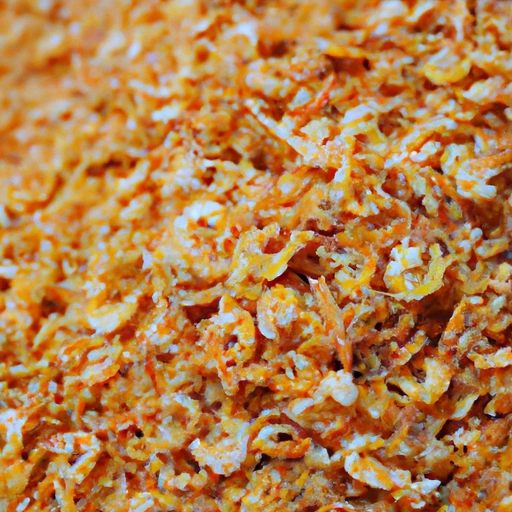Dried Shrimp
Description

Dried shrimp are small, dehydrated shrimp used as a flavor enhancer in many cuisines around the world. These tiny crustaceans are packed with a savory, umami-rich taste, making them a versatile ingredient in a variety of dishes. Dried shrimp can be found in different sizes, ranging from tiny to medium, and are typically sold in packages or bulk bins. They are known for their chewy texture and concentrated shrimp flavor, which intensifies during the drying process.
Common uses
Dried shrimp are commonly used to add a savory depth to dishes, such as soups, stews, sauces, and fillings. They are also used as a condiment, either ground or whole, to sprinkle over meals for added flavor. In some cultures, dried shrimp are eaten as a snack, either on their own or mixed with nuts and spices.
Nutritional value
Calories
Approximately 1 ounce (28 grams) of dried shrimp contains about 60-80 calories.
Protein
Dried shrimp are an excellent source of protein, providing around 14-20 grams per 1 ounce (28 grams).
Fat
They are low in fat, with roughly 1 gram of fat per 1 ounce serving.
Carbohydrates
Containing less than 1 gram of carbohydrates per 1 ounce, dried shrimp are a low-carb option.
Vitamins
While not a significant source of vitamins, dried shrimp do contain small amounts of some B vitamins.
Minerals
Dried shrimp are rich in certain minerals such as phosphorus, potassium, and calcium. They are also an excellent source of iodine, crucial for thyroid function.
Health benefits
Dried shrimp may contribute to a healthy diet by providing high-quality protein, essential amino acids, and important minerals. The iodine content in dried shrimp is beneficial for thyroid health, while the calcium and phosphorus can support bone health.
Potential risks
As with many seafood products, dried shrimp may contain allergens and should be avoided by those with shellfish allergies. Additionally, dried shrimp are high in cholesterol and sodium, which should be considered by individuals with related health concerns.
Common recipes
Dried shrimp are featured in recipes such as shrimp paste, spicy salads, stir-fries, and as a topping for noodle dishes.
Cooking methods
Before use, dried shrimp are often soaked in water to rehydrate them. They can then be minced or added whole to recipes. They may also be dry-roasted to intensify their flavor before being ground into a powder.
Pairing with other ingredients
Their rich umami flavor pairs well with vegetables like bitter melon, eggplant, and greens. They also complement starches such as rice and potatoes and blend harmoniously with spices like chili, garlic, and ginger.
Summary
Dried shrimp are a cherished ingredient across various culinary traditions, valued for their intense flavor and ability to enhance a myriad of dishes. They offer nutritional benefits as a source of protein and minerals, yet should be consumed in moderation due to their cholesterol and sodium content. With proper usage, dried shrimp can elevate the taste profile of countless recipes, transforming simple dishes into savory delights.